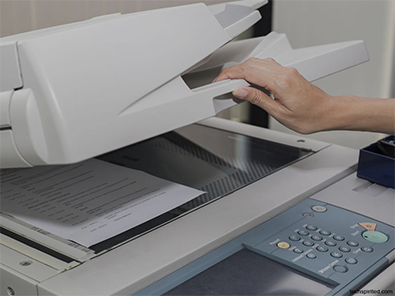3-D Printing: The Mysterious Adjacency
While you probably know more about 3-D printing today than you did 12 months ago, I bet you still scratch your head whenever a 3-D printing video or article comes out.
You’re not alone.
The first time I saw a 3-D printer was in 2010. It utilized an Epson print head and was being used at a school of design to make toys.
Back then I thought it was cute – a good way to prototype designs or manufacture toy soldiers (because it takes a long time to make toy soldiers). I saw the supplies, understood the basic process and promptly stashed the experience behind the managed print services and business intelligence shelf of my mind. Forgotten.
A year or two later, folks are 3-D printing meat.
I know what you’re thinking: “Printed meat! How in the heck can I get on board with that? Who are the OEMs? If I wanted to become a dealer, do I need to be authorized? What’s the mean poundage between failure? How do MDF and rebates work? Can I get above 125 percent of retail when I lease these things?” Oh, you’re a crazy one, aren’t you?
You’re not alone.
Synnex is offering 3-D printers through its PRINTSolv wide-format group – not meat printers, granted, but some of the best 3-D printers in the market. This tells me that somebody somewhere sees a parallel universe between imaging and 3-D’ing.
Personally, I’m sticking with my assertion that 3-D printing has nothing to do with printing. I’m also not overly optimistic about copier dealers making the turn from 2-D (melting toner on paper) to 3-D (making things); just look at all the successful managed print services practices out there.
I am not saying that 3-D printing won’t be a big influence and change the way we all live, work and play. I believe the technology has great promise in areas we can’t imagine. I just don’t think a projected $2B industry (3-D) is the Grail for our niche.
Will some dealers sign up, slap another banner on the website and call themselves 3-D printing experts? Yes. Is the model similar to copiers and supplies? Sort of. The prospective decision-makers are different, the pain is not the same, the process is unfamiliar, and the incoming revenue model is unknown. As a matter of fact, the entire business model hasn’t been built yet. Sound familiar? (MpS, MS … )
Here are some concerns:
-The business model is undetermined.
-Service expertise requirements are unknown.
-These contraptions have nothing to do with paper.
-The market isn’t that big anyway.
The first two issues are addressable: A business model should be “more money coming in than there is going out,” and technical training can be ad-hoc (it’s how we do what it is we do and train as we go).
The third hurdle resides primarily between the ears. Without paper, how do we bill? Notice how Synnex placed 3-D printers in the wide-format area. Anyone who knows anything about MpS realized early on that billing for wide format is easier by cartridge (ink) and roll (paper). How do we bill by linear foot?
It’s almost the same with 3-D printing. The “supplies” – like your handy, dandy Weed Whacker – are loaded on a spool. The ‘filament’ is fed into the device and melted, ultimately finding its way through print heads and nozzles.
So from the outside, it looks a lot like what we do every single day.
Is this thing for real, though?
Let’s say you’re a dealer interested in expanding your portfolio of offerings – partly because you’ve conquered copier sales, EDM implementations and managed print services. Further, let’s assume your managed services practice is paying for your NOC and then some. Life is good; it’s time for more. Looking around, you find coffee services just aren’t your cup of tea, and the document destruction market is full of big-time players. What to do? You already know.
–Check out the shows: Information is everywhere, and our industry loves shows.
–Read up on the technology: The Internet has everything you need.
–Study your market: Look into engineering firms that currently work with you and ask about this thing called 3-D printing. Look toward your wide-format customers first.
–Call a vendor or two: Googlitize “3-D printer manufacturers” and get to work.
–Start selling: Hire a newbie from outside the industry, give them a price list and let them go.
Nobody wants to one day bark at a computer, “Hot dog, Hebrew National, bun, mustard … hot,” more than I; to have the delectable treat slide out of a slot in my wall would be Trek nirvana. But I won’t be running down to the local copier store for a demo, and I won’t be signing any 60-month leases with service and supplies embedded, either. I’ll probably order the machine online; set up the delivery of plastic filament, bio-nanos or whatever supplies I might need from the manufacturer; and start yelling out beverage orders left and right. But that’s just me.
The 3-D revolution will be at the consumer level. Indeed, we could see a tidal wave of C2C (consumer-to-consumer) economies all around the globe. The size of the C2C market is huge. But for us selling 3-D printing devices business to business (B2B), the market is forecast to be around $2B by 2015. This isn’t all that big when you consider some estimates place our niche at around $50B. Be that as it may, the easy path into adjacencies may mean getting into 3-D printers.
Installing big machines with stairclimbers and hand-delivering filament may be right up your alley, so 3-D printing could be in your future. For now, I’ll watch Star Trek reruns to see what our real future is going to be.
“Tea, Earl Grey, hot.”
Posted on 12/09/2013


